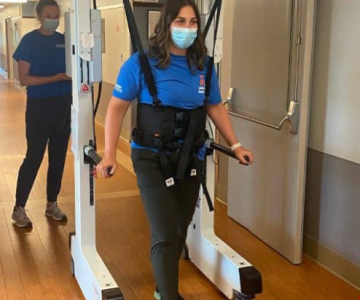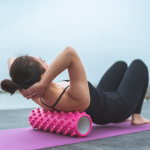The Apple Watch made its debut last September, and when its release was finally announced, runners were keen to learn more about how this new gadget would measure up to their fitness needs. Apple CEO Tim Cook revealed some exciting features about the Apple Watch, and though questions about its performance still lingered, runners were eager to discover what the watch could bring to the table.
Here’s everything endurance enthusiasts need to know.
What Does It Track?
The Apple Watch features two primary apps for fitness tracking: the Activity app and the Workout app. The Activity app is designed to monitor your daily activity, presented as three colored rings. The Move ring tracks the calories you burn, the Exercise ring measures your active minutes, and the Stand ring indicates the time you’ve spent on your feet. You can set personal goals for each of these rings, with the option to adjust them manually or receive motivational suggestions from Apple.
The Workout app, on the other hand, is designed specifically for fitness activities like running or cycling. It tracks your time, distance, pace, and calories burned, much like any other fitness watch. The watch also stores your workout history, offering motivation in the form of achievements, goal suggestions, and progress updates.
The Apple Watch also includes a heart rate monitor on the back, featuring infrared and visible-light LEDs. This, combined with the watch’s accelerometer, gyroscope, and your iPhone’s GPS, provides a comprehensive overview of your health metrics.
Can I Replace My GPS Watch?
Unfortunately, not quite yet. The Apple Watch lacks integrated GPS, so if you want to track your running route, pace, or distance, you’ll need to bring your iPhone along and connect the two via Bluetooth. It’s worth noting that while Tim Cook has shared that the watch is water-resistant enough for showering, there hasn’t been any mention of its performance in the pool or during heavy rain.
What Else Can It Do?
Apart from fitness tracking, the Apple Watch boasts some standout features. One of the most exciting is the ability to store music directly on the watch, so you won’t need your phone to listen to your favorite tunes. The watch also includes a feature called “Glances,” which lets you swipe up from the bottom of the screen to access important information like your heart rate, weather updates, music controls, and text or email notifications.
Another unique feature is “Digital Touch,” which allows you to send your heartbeat, draw pictures, or get someone’s attention with simple taps. You can also call an Uber, use your watch as a hotel room key, or make payments with Apple Pay, all directly from the watch. A range of apps designed specifically for the Apple Watch is also available, which can be downloaded from the Apple Watch app store on your iPhone.
Which Fitness Apps Are Compatible?
To download apps, you’ll use the Apple Watch app store within iOS 8.2 on your iPhone. While the keynote didn’t mention many fitness-focused apps besides Nike+ Running, Strava has confirmed it will release an app for the watch at launch.
How Long Does the Battery Last?
Battery life is always a concern for smartwatches. If you’re planning on using the Apple Watch during long runs or races, you might need to rethink your strategy. Cook promised “18 hours” of battery life for typical use, but it’s unclear whether this includes heavy usage. There are reports suggesting the watch may struggle to hold a charge for several hours during active use. All-day heart rate tracking may not be included in the final version due to battery concerns. So, expect to charge your watch overnight, and likely after workouts as well.
What’s the Build Like?
The Apple Watch comes in three models. Runners might find the Apple Watch Sport the most appealing. Made from anodized aluminum, it’s available in silver and space gray, with a 38mm or 42mm screen protected by Ion-X glass. The watch is about 30% lighter than its stainless steel counterparts, and there are five different band color options available.
The standard Apple Watch is made from stainless steel or black stainless steel, with a variety of bands to choose from. For those seeking a luxury option, the Apple Watch Edition features a stunning 18-karat gold case in rose or yellow gold.
How Do You Use It?
Despite its small size, the Apple Watch is easy to use. It has a touchscreen that distinguishes between regular taps and harder presses, known as “Force Touch,” for specific controls. The watch’s interface is navigated using the “Digital Crown,” a dial on the side of the face, making it easy to scroll through menus. Siri is available to assist with voice commands, and the Taptic Engine gives you discreet feedback through gentle vibrations.
The Apple Watch connects with your iPhone via Bluetooth or WiFi, and you’ll need at least an iPhone 5 or later to use the device.
What’s the Price, and When Can You Get It?
Pre-orders for the Apple Watch began on April 10, with the official launch in stores set for April 24. Visit your local store for a demo on release day and experience the features firsthand.





